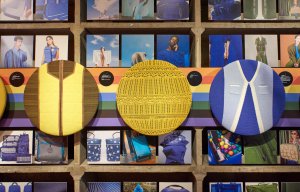
Continuing optimism at Pitti Filati 90
The 74th edition of Pitti Filati took place in Florence in its usual location at the Fortezza Da Basso between the 22nd and the 24th of January. The general spirit of positivity of the past few editions seems to be getting stronger, and steadier, proving the tenacity of the Italian spinners on a very long way to recovery. The results speak for themselves: after a tragic -7.8% of the annual turnover for the Italian spinning industry in 2012, the past year has seen an overall increase in production that has reduced this drop to a -2,1%.
-306x408-boxed.jpg)
12th February 2014
Knitting Industry
|
Florence
The 74th edition of Pitti Filati took place in Florence in its usual location at the Fortezza Da Basso between the 22nd and the 24th of January. The general spirit of positivity of the past few editions seems to be getting stronger, and steadier, proving the tenacity of the Italian spinners on a very long way to recovery. The results speak for themselves: after a tragic -7.8% of the annual turnover for the Italian spinning industry in 2012, the past year has seen an overall increase in production that has reduced this drop to a -2,1%.
The closing figures of the latest fair are also extremely positive: foreign markets are still the engine of the Italian fashion industry, with 4,000 buyers (an increase of nearly 6% compared to the 3,700 buyers registered at the January 2013 edition), of which 1,700 from abroad, accompanied by a small but reassuring increase in the number of Italian buyers.
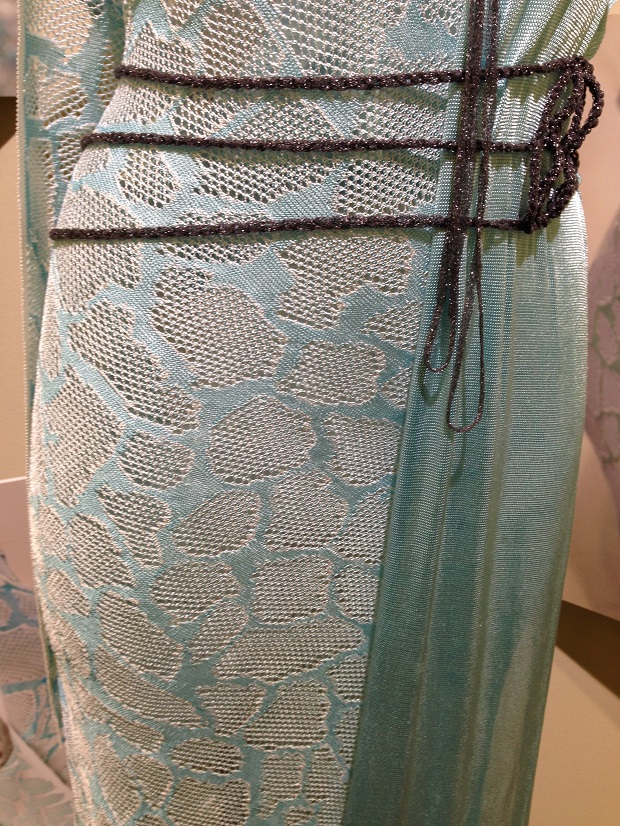
Among the foreign markets, the best performances are those of France, Spain, Switzerland, Holland, Turkey, Russia, and China. The emerging market of South Korea has also had a far stronger presence at this edition, with participant numbers three times higher than the previous one.
In terms of international buyers, the 15 Countries that confirm their leading role are: Germany (250 buyers), followed by Great Britain (231 buyers), France (168), Spain (109), the United States (100), Switzerland (93), Turkey (90), Japan (62), Russia (53), South Korea (39), China (32), Belgium (31), Hong Kong (30).
Raffaello Napoleone, CEO of Pitti Filati, also commented on the past show, explaining that “There was a general feeling of satisfaction among the stands: the exhibitors presented beautiful collections, and we saw lots of creativity, experimentation, and innovative fashion content. Once again, foreign participants are proving to be the driving force behind the Italian fashion system, on all levels and for all segments, with increases not only in terms of numbers, but also in terms of quality. And, I must emphasize that Pitti Filati, too, is sending clear signals of recovery on the Italian market, and a market reversal already seems to be taking place”.
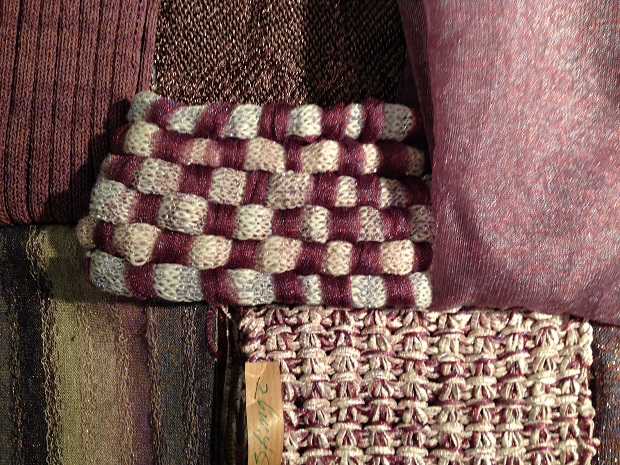
“Rock Me Pitti” was the general theme that characterised the various Pitti shows this season, and it celebrated the marriage between fashion and music, a union that has always created interesting trends and that has shaped many generations of fashion designers and youths.
This season the Research Area’s inspiration was a simple word with many meanings: Play. We can play a song or a sport, a game or a role as an actor. Under the artistic direction of fashion designer Angelo Figus and knitwear expert Nicola Miller, the layout of the exhibition changed dramatically from last year, and it became less about fashion and more about a visual feast for the senses, an inspiring places for all the visiting designers where experimental knitted textiles were the protagonist. There were 11 sub groups were the meaning of the word “play” were explored: Mime, Shadow, Diva, Rock, Bizarre, Surreal, Doll, Lego, Playstation, Body, Soul. The mask, for the face or for the body, worn by actors and performers alike, was the common thread between each group and it celebrated the significance of fashion as an individual choice: “Each and every one of us is a trend setter” stated Angelo Figus “this is what we want to communicate with Play”.
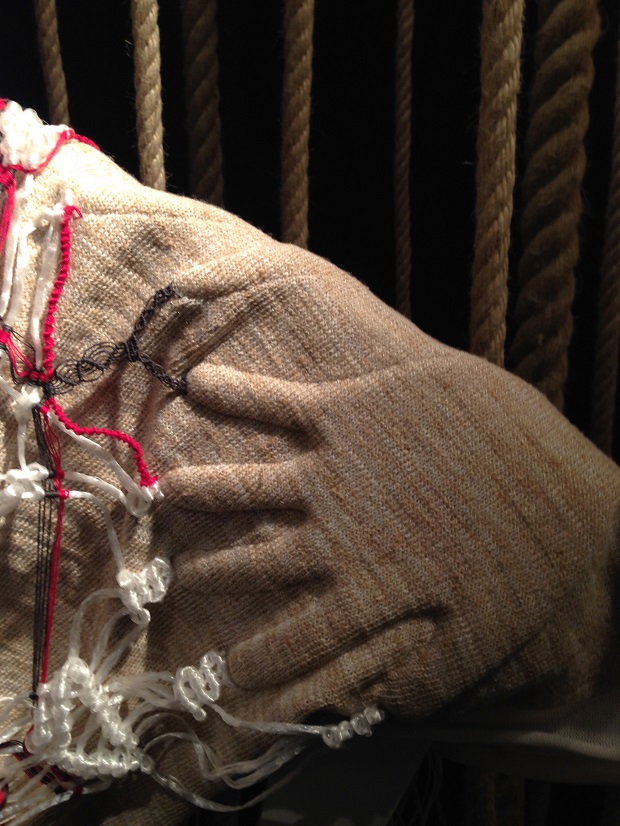
This season Angelo Figus and Nicola Miller collaborated with the students of five colleges and their tutors: IED, (European Institute of Design, in Milan), IUAV (University of Venice), NABA (the New Academy of Fine Arts, in Milan), Polimoda, the renowned Florentine fashion school, and Buckinghamshire New University, from the UK. Some Italian knitwear fasctories (Mas, Mely’s, Giordano’s, Gruppo Tessile Bendini) were also involved in the realisation of some of the fabrics.
KnitClub, an initiative that was launched during the summer edition and that promotes Italian and international knitwear factories, grew considerably and it included many more participants this time. Shima Seiki, one of the leading producers of knitting machines and knitting software, also exhibited for the first time as part of KnitClub.
The concept of sustainable luxe defined many of the spinners’ collection during this edition: sophisticated and technologically advanced yarns with and incredibly light and fluid handle, hollow chains and incredibly lustrous viscose yarns, well considered sparkly effects were some of the key elements.
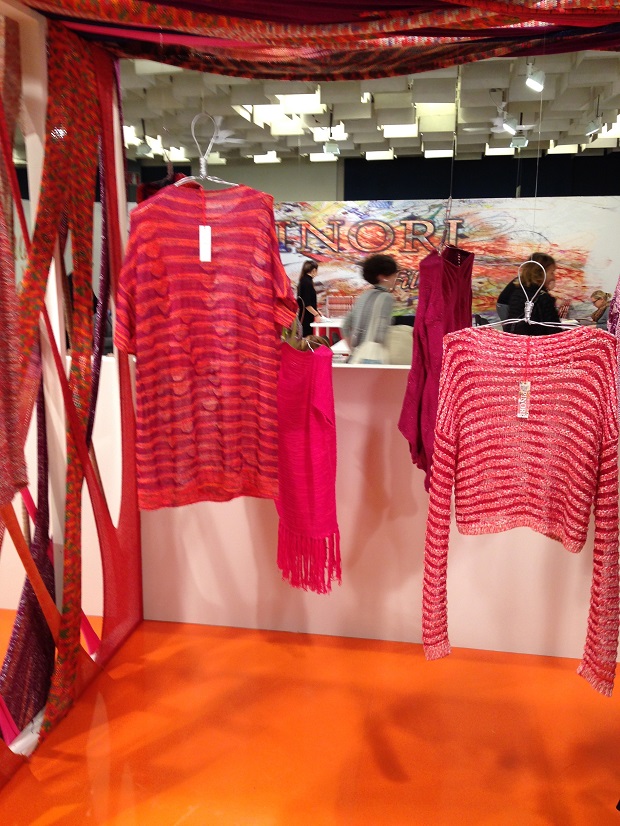
The smart use of man made fibres like polyamide and polyester coupled with natural ones created unexpected effects with unusually surprising tactile qualities. Some of the spinners kept linen as the main element of their collections.
Zegna Baruffa’s new proposals for the season were Gelsomino (linen/viscose), Melia, a very light and compact cotton and viscose and Salvia, a very fine and opaque guaze.
Ginepro (cotton/linen) was also a very interesting yarn: the uneven and irregular effects created by its composing fibres make it perfect for cutting edge knitwear. Along with its popular viscose mix yarns (Maui, Bering and Aqua) , with Memphis (linen and cotton) and Sand (cotton with a crisp, dry handle), Zegna also presented Safari, a clean, natural looking yarn with graphic effects.
.jpg)
Ecafil presented a mix of industrial and hand knitting yarns, all inspired by the rich colours of Italian summer. Natural fibres mixed with polyamide and polyester were the key elements of this collection, like Frozen, Jive, Solar (a tape yarn knitted with two different fibres, linen and acetate, in two different colours) or Glass, a very sophisticated transparent tape yarn. Printed or melange effects were also recurrent in Ecafil’s collection, like Silky (silk), Dalai (chunky viscose and linen) and App (cotton and polyester).
Filati Biagioli Modesto’s collection suggested a very sophisticated sense of simplicity, one of the company’s developments were their new worsted cashmere yarns in various counts (2/60’s, 2/80’s, 3/60’s, 3/80’s). Princess, a cotton and silk mix with a melange effect created by the dyeing process, was also a very interesting yarn.
Igea’s collection was characterised by some very elegant and lustrous viscose yarns with mirror like effects in extremely fine counts, like Acqua, and some chunky, yet light and airy tape yarns, like Mago (100% polyamide), with a very dramatic, transparent effect, and Cayman (100% polyester), with an interesting smoky tonality.
.jpg)
Manifattura Sesia’s proposals for s/s 15 were a mix of fresh denim with metallic and overdyed effects. Cotton, linen and polyester mixes were the key fibres, Goccia, a 100% silk yarn with fine glass beads from Murano was the most elegant addition to their collection.
Millefili dedicated their collection to minimalism, transparencies and technological yarns with three dimensional effects.
The Research Area presented a dramatic journey through the colours of s/s15, a tumultuous symphony that spans from the muted, natural tones reminiscent of traditional Japanese architecture and Wabi Sabi (pale greys, browns, very light pastel greens and yellows) to the bolder, more urban bright blues, fluorescent yellows and metallic pinks: a big melting pot, a living patchwork of individuals where general trends make space for a more personal, irreverent and non-judgemental style.
.jpg)
There is room for rich, golden tonalities and antique pinks along with synthetic, acid reds. Precious silk fabrics are embellished with plastic beads, girly shades of lavender and fresh, summery orange walk hand in hand with sharp purples and shimmery greens.
WOVEN EFFECTS AND NEW CHECKS
Geometric transparencies recalling weave structures are created using a combination of thin, transparent nylon yarns and thicker cottons or through engineered ladders and lace stitches. Bold jacquards and textured stitches are also used to create the same effect, thick strands of tubular are also hand woven creating bulky fabrics.
DEVORE EFFECTS
Shimmery and fluid viscose yarns are knitted in contrasting structures to create organic patterns, subtle relief effects and elegant transparencies.
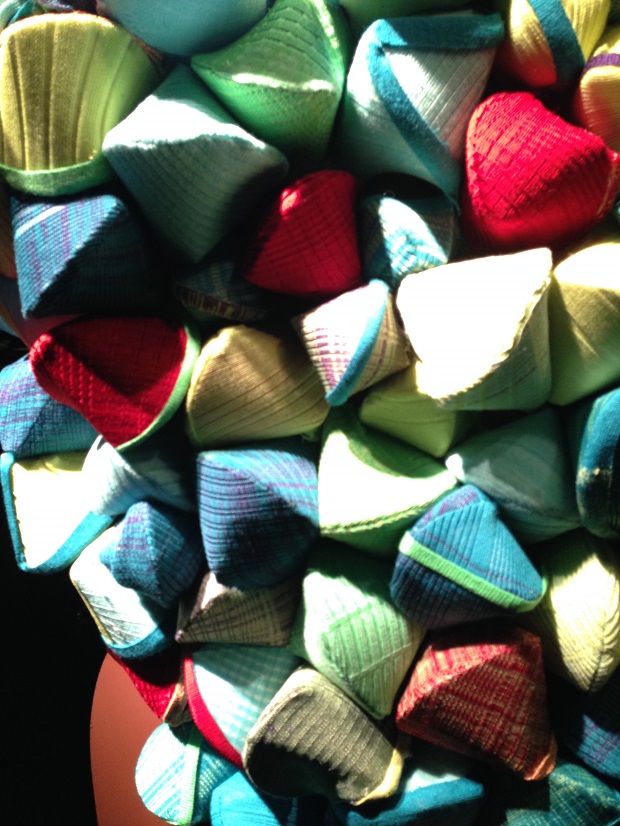
NEW STRIPES
The simplicity of clean stripes is revisited through the use of monochromatic yarns in contrasting counts, creating bold and confident transparencies on the wearer’s body. Stripes are also created through the alternation of different stitches in different colours, tubular and single bed fabrics.
EMBOSSED EFFECTS
Opulent textiles with organic and geometric relief patterns that resemble weave structures, compact, minimal fabrics knitted with technological yarns and with a soft and rubbery handle. Blister stitches in contrasting yarns (one slightly thicker, denser and opaque and the other one thinner, fluid and shimmery) are used to create tactile samples with a surprising handle.
THREE DIMENSIONAL FABRICS
Dense ruches knitted in lightweight, transparent yarns, micro pleats creating airy and textured textiles, heavily ruffled fabrics characterise this group.

Business intelligence for the fibre, textiles and apparel industries: technologies, innovations, markets, investments, trade policy, sourcing, strategy...
Find out more